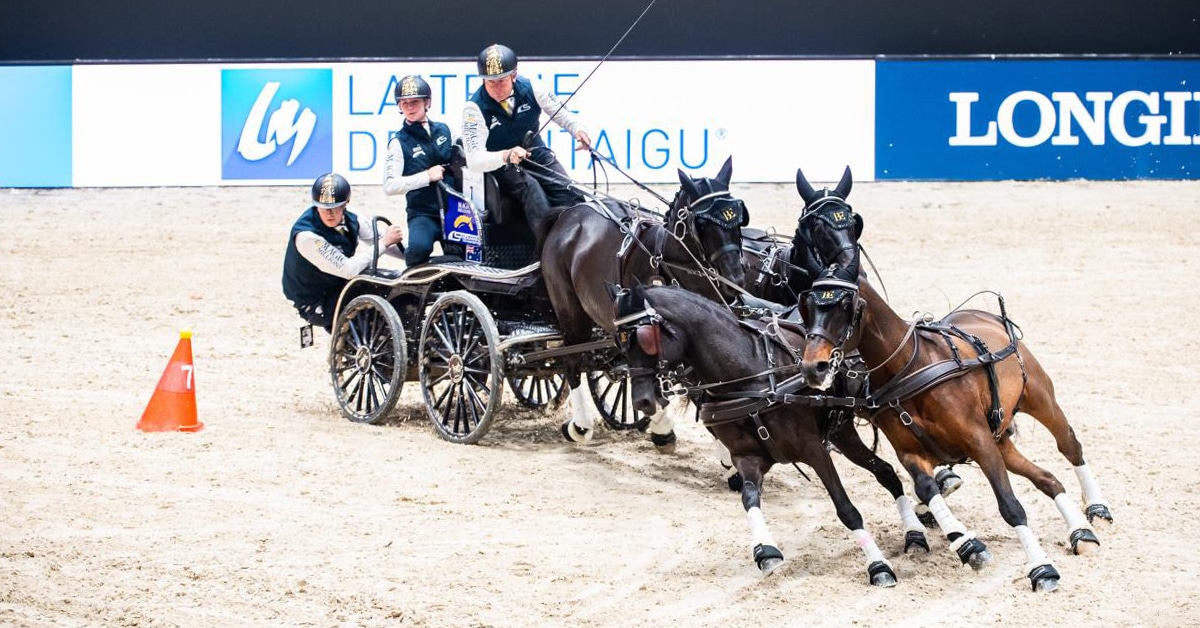On January 6th, 2020, the Ontario Ministry of Agriculture, Food and Rural Affairs (OMAFRA) was notified of two cases of equine abortion in Simcoe County. Both cases were confirmed to be caused by equine herpesvirus-1 (EHV-1).
Both mares aborted during their 10th month of pregnancy and both arrived from an out-of-province location in December. A third mare was exposed to the infected mares but has remained unaffected. The farm manager was proactive and kept the new mares separate from the resident mares and in a small group. This type of management procedure reduces the risk of spreading the virus to the entire herd. Working with their veterinarian, the farm manager has isolated the affected mares and has voluntarily placed the premises under quarantine to reduce the risk of viral spread.
EHV-1 infection is easily spread to other horses by nose-to-nose or close contact with an infected horse or aborted fluids, by sharing contaminated equipment including lead shanks, buckets and towels or by the clothing and hands of people who have recently had contact with an infected horse.
Biosecurity is key to preventing spread of EHV-1. Strict routine biosecurity measures are the best way to minimize viral spread and should be in place at all times to prevent a disease outbreak, including hand hygiene and basic cleaning and disinfection practices. Pregnant broodmares should be housed separately from other groups of horses such as young stock, boarders and horses in training. Stress increases the risk of horses shedding the EHV-1 virus, even years after initial infection. Stress caused by severe weather should be minimized by access to appropriate shelter, food and water. Stress due to transport and mixing of social groups should be avoided when possible in the last trimester of pregnancy.
Current EHV-1 vaccines that protect against abortion should be administered during the 5th, 7th and 9th months of pregnancy and according to the manufacturer’s guidelines to limit the amount and time that the virus is shed. EHV-1 vaccines marketed for prevention of respiratory disease may reduce viral shedding but are not protective against developing the neurological form of the disease in the vaccinated animal.
EHV-1 causes abortion as well as respiratory disease, neonatal foal death and/or a neurological disease called equine herpes myeloencephalopathy (EHM). Broodmares that abort due to EHV-1 may not show any clinical signs but will shed large amount of virus in aborted fluid and tissue. Pregnant and non-pregnant horses exposed to the virus may develop neurologic disease. Because a fever (101.5 °F or 38.6 °C) may be the first indication of infection prior to neurologic disease developing, the temperature of exposed animals should be monitored twice daily for 21 days and any abnormalities discussed with a veterinarian. Neurological signs, if they develop, may include loss of balance, hind-limb weakness, difficulty urinating, decreased tail tone, depression and being down and unable to rise. It is important that a veterinarian assess horses demonstrating neurological signs since it can be difficult to distinguish this from other serious diseases such as rabies.
EHV-1 infection is not a federally reportable disease but in Ontario it is immediately notifiable by laboratories to OMAFRA under the Animal Health Act. Attending veterinarians concerned about cases of equine herpesvirus-1 infection may contact an OMAFRA veterinarian through the Agricultural Information Contact Centre at 1-877-424-1300.
The Ontario Animal Health Network (OAHN) equine network developed an infographic to help owners understand the biosecurity measures to be taken to reduce the risks of EHV-1 abortion.
“The majority of our [province’s] EHV-1 abortions have occurred in the racehorse breeding industry, and certainly our biggest outbreaks have,” said Alison Moore, OAHN equine network co-lead. “That’s not really surprising given the size of the broodmare bands, the movement of mares and the money spent on testing to work up abortions.
“EHV-1 infection is immediately notifiable to OMAFRA by the laboratories so we are notified of positive test results. We follow up with the attending veterinarian and provide assistance in managing the situation.”
She added, “One of the recurring themes I hear is the housing of racehorses with pregnant mares. If a mare aborts, the premise is usually placed under a voluntary quarantine by the farm manager, which means no one moves. Racehorses should be housed separately, in a separate barn, different part of the property or entirely different location, than broodmares and should have their own staff handling/mucking etc.”
OAHN has also produced a podcast on EHV-1 abortion. Click here to access.
More News









